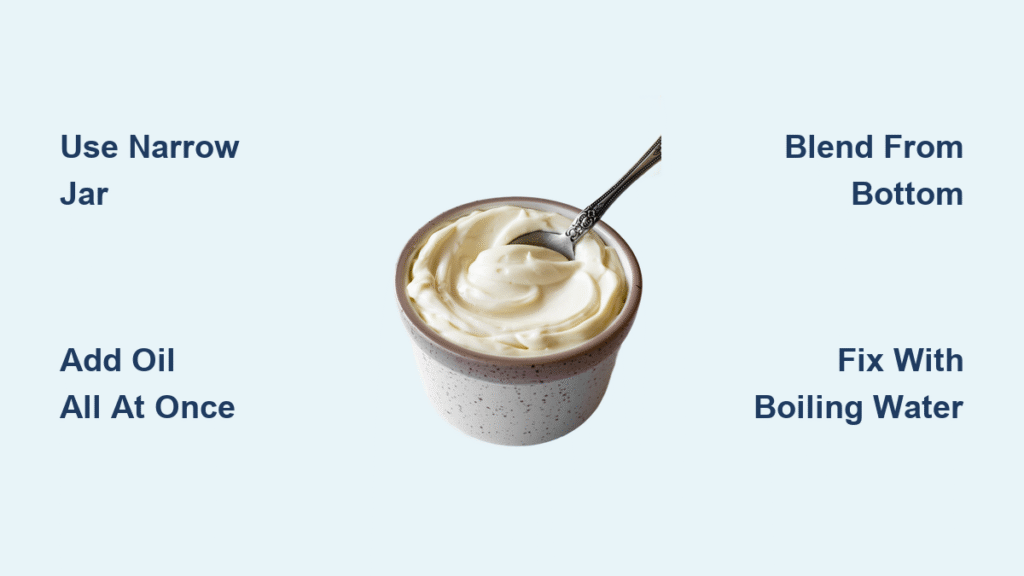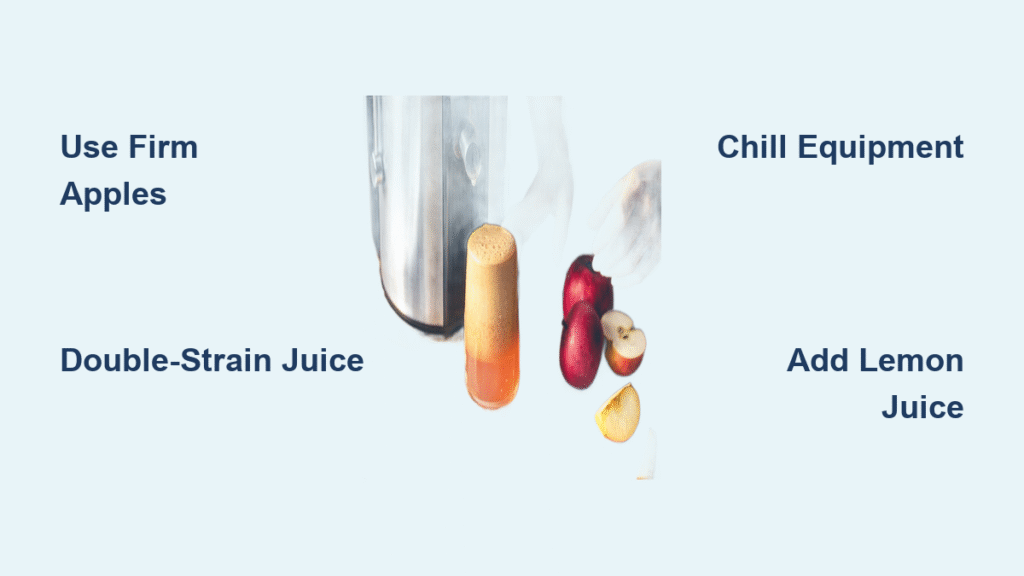Forget sore arms and failed emulsions. Your immersion blender transforms how to make mayonnaise with hand blender into a foolproof 30-second kitchen triumph that costs pennies and tastes exponentially better than any store jar. While traditional methods demand 15 minutes of wrist-cramping whisking, this technique harnesses your hand blender’s vortex power to create restaurant-quality results every time—no culinary expertise required. You’ll never buy commercial mayo again once you experience the bright, fresh flavor of homemade.
This guide reveals the exact container specifications, ingredient ratios, and blending sequence that guarantee perfect emulsions. Whether you’re prepping for sandwiches, dips, or aioli variations, you’ll master this foundational skill in under five minutes flat. Let’s turn your immersion blender into a mayonnaise-making powerhouse.
Choose the Perfect Container for Blending Success
:max_bytes(150000):strip_icc()/sea-immersion-blenders-sep-24-test-vitamix-rkilgore-1414-cd057072ae194699900c36986531b559.jpeg)
Your container choice makes or breaks the emulsion. Skip wide bowls—a narrow mason jar or the cup included with your hand blender creates the critical vortex that pulls oil into the egg base. The ideal vessel must be tall enough to prevent splatters (minimum 6 inches) yet narrow enough for the blender head to nearly touch the sides. A standard 16-ounce mason jar fits most immersion blenders perfectly, while the plastic cups bundled with blenders often work if they’re not excessively tapered.
Why Container Width Matters Critically
Too wide? The vortex dissipates, leaving oil floating on top. Too narrow? Your blender head can’t move freely, creating air pockets. Test your container by placing the blender head at the bottom—if you can slide a butter knife between the head and jar wall, it’s too wide. For best results, use the container that came with your blender or a 2-cup capacity mason jar. Never attempt this in a standard mixing bowl; the physics simply won’t work.
Gather Ingredients for Foolproof Emulsions
Skip specialty stores—every ingredient lives in your pantry. Room temperature eggs emulsify fastest, but the hand blender method succeeds even with cold ingredients (just submerge eggs in warm water for 2 minutes if you have time). Quality oils matter most here, as they dominate the flavor profile.
Oil Selection Science Decoded
Neutral oils like canola or grapeseed create classic, versatile mayonnaise without competing flavors. Avoid pure extra-virgin olive oil—its low smoke point and strong taste turn bitter during blending. For gourmet results, blend 80% neutral oil with 20% olive oil (e.g., 1¼ cups canola + ¼ cup olive oil). Avocado oil works beautifully for buttery notes, but steer clear of sesame or walnut oils—they overpower the delicate emulsion.
Execute the 30-Second Blending Sequence
Timing and order are non-negotiable. This method skips the traditional slow oil drizzle because your immersion blender’s force creates immediate stability. Follow these steps exactly for guaranteed success:
Layer Ingredients in Precision Order
- Add 1 whole room-temperature egg to your jar
- Pour in 1 tsp Dijon mustard, 1 tbsp apple cider vinegar, 1 tbsp lemon juice, and ½ tsp salt
- Top with all 1.5 cups of oil at once—no gradual pouring needed
Critical pro tip: Mustard isn’t optional—it contains extra emulsifiers that stabilize the mixture. Yellow mustard works in a pinch, but Dijon’s acidity prevents breakage.
Activate the Emulsion in 60 Seconds Flat
- Press your hand blender firmly to the jar’s bottom, covering the egg completely
- Turn on high speed and hold stationary for 5-10 seconds—watch thick white mayo form below
- Slowly raise the blender 1 inch as the mixture thickens, continuing until fully incorporated
- Stop when oil vanishes (usually 30-60 seconds total). If oil pools on top, lift the blender (turned off), push it down through the oil layer, and pulse briefly.
Troubleshooting checkpoint: If mayo seems thin after blending, let it rest 1 minute—the emulsion continues setting off-blender.
Fix Broken Mayonnaise Instantly

Even pros face separation. Don’t trash it—rescue failed batches in 20 seconds with science-backed fixes:
Boiling Water Rescue Method
Add 2 tablespoons boiling water directly to the broken mixture. Re-blend on high for 10 seconds. The heat reactivates lecithin in the egg yolk, forcing oil droplets back into suspension. This works 95% of the time with the immersion blender method.
Prevention Tactics You Must Implement
- Always start blending from the bottom—lifting too soon causes separation
- Verify container width matches your blender head size (gap <¼ inch)
- Never add oil first—it must sit atop the water-based ingredients
- Use fresh eggs (less than 2 weeks old)—older eggs have weaker emulsifying power
Customize Flavors Like a Pro
Transform basic mayo into signature sauces with single-ingredient upgrades. Add all flavor boosters during the initial ingredient layering so they incorporate evenly:
Three Signature Variations
- Garlic Aioli: Toss in 2 minced garlic cloves before blending (let sit 10 minutes for deeper flavor)
- Dill Ranch: Fold 2 tbsp fresh chopped dill + 1 tsp onion powder into finished mayo
- Chipotle Kick: Blend 1 tbsp adobo sauce from canned chipotles for smoky heat
Dietary swaps: For vegan mayo, replace egg with 3 tbsp aquafaba (chickpea brine), but note texture will be slightly thinner. Always use rice vinegar instead of apple cider for paleo diets.
Store Safely for Maximum Freshness
Homemade mayo lacks commercial preservatives, so proper storage is non-negotiable. Transfer to a sterilized jar immediately after blending (wipe the rim clean to prevent mold). Place in the back of your refrigerator—not the door—where temperatures stay consistently cold.
Shelf Life Reality Check
- With fresh eggs: Consume within 14 days
- With older eggs: Use within 7 days
- Discard immediately if you detect sour smells, yellowish tint, or watery separation that doesn’t reincorporate when stirred
Never freeze mayonnaise—ice crystals destroy the emulsion structure, yielding a grainy, separated mess upon thawing.
Outperform Store-Bought on Cost and Quality
The math is undeniable. Premium store mayo costs $4.50 for 30 ounces, while your homemade version uses $1.20 of ingredients for the same volume. But savings are just the start—you control every element:
Health and Flavor Advantages
- Zero preservatives like potassium sorbate or sodium benzoate
- No hidden sugars (commercial brands add 1-2g per serving)
- Custom sodium levels—reduce salt by 50% without texture loss
- Heart-healthy oil choices—use high-oleic sunflower oil for better fat profiles
Taste tests consistently show homemade mayo’s brighter acidity and cleaner finish. Store versions taste flat and oily in comparison—proof that freshness matters.
Master Texture Control Every Time

Adjust thickness in seconds without remaking the batch. For thicker mayo, blend in 1 extra tablespoon oil—the immersion blender handles this seamlessly. If too thick, add warm water ½ teaspoon at a time while blending until silky.
Scaling Secrets for Any Crowd
- Double batches: Use a 32-oz jar and maintain ingredient ratios (2 eggs + 3 cups oil)
- Mini batches: For single servings, use 1 egg yolk + ¾ cup oil in a 12-oz jar
- Critical note: Never scale below ½ cup oil—emulsions fail with tiny volumes
Troubleshoot Like a Mayonnaise Scientist
When issues arise, diagnose using this flowchart:
| Symptom | Likely Cause | Fix |
|---|---|---|
| Thin, runny texture | Container too wide | Transfer to narrower jar and re-blend |
| Bitter aftertaste | Too much olive oil | Restart with neutral oil; use broken batch in dressings |
| Oil layer on top | Started blending too high | Push blender to bottom and pulse 5 seconds |
| Grainy texture | Cold ingredients | Warm finished mayo in bowl over warm water |
Pro insight: If emulsion fails repeatedly, your blender lacks sufficient wattage (needs >150W). Cheap models create weak vortices.
Final Pro Techniques for Perfection
Time your prep—make mayo the night before for flavors to meld, but never beyond 48 hours. For silky texture, ensure all ingredients are within 10°F of each other (room temp ideal). Boost stability by adding mustard—it contains additional emulsifying compounds beyond egg yolk.
Your immersion blender just became the most valuable tool in your kitchen arsenal. Within 30 seconds, you’ve created a versatile condiment that elevates everything from potato salad to gourmet burgers. The vibrant flavor and creamy texture of fresh hand-blender mayonnaise will make store-bought versions taste artificial and stale. Start with the classic recipe today, then experiment with bold variations—your taste buds will thank you.





